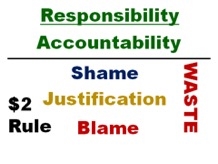Social media was once regarded as the marketing wild card – a platform that was more of a luxury than a necessity for brands. Today, social media marketing is mainstream, and businesses that haven’t invested in it are losing market share to their competitors.
To ensure that yours doesn’t, you need a researched and well thought-out social media marketing plan. The following are seven steps you need to cover when building yours.
1. Choose Social Media Goals That Address Business Challenges
Goals come first, always. Why should you invest in social media? What are your desired outcomes?
What’s tricky, is the wide range of capabilities that social offers – from building brand awareness, to educating consumers, enabling sales and providing customer service. If you can’t zero down on definite goals, ask yourself these questions.
- Do you need to boost your website traffic?
- Are you unable to access a certain target market?
- Does your consumer education program need a new avenue?
- Do you need to improve your brand-consumer relationship status?
If you can answer all of these questions, you are ready to begin building your social media marketing plan.
2. Research Competition And Identify Their Strategies
As it turns out, researching competition doesn’t only keep you updated on their moves, but helps you recognize tactics that are working on your target market.
List about five immediate competitors and analyze their social media presence.
- Which networks are they most active on?
- What content are they sharing?
- How often and at what times do they post each day?
Pay close attention to their content strategy and how their fans are responding. It’s also a good idea to keep track of the engagement on their pages, so you can benchmark yours against theirs.
3. Consider All Departments To Create A Plan That Bears More Benefits
For the longest time, social media belonged to the marketing department, but that’s no reason for you to limit it to yours. Social networks can benefit any department in a business, when used properly.
Marketing: Social platforms are great for traditional marketing departments like advertising and PR, but you can always find newer ways to engage your audience via social.
Everything from product launches to conferences and holiday campaigns can be run successful on social.
Sales: Social media can be used to find real prospects, assist them in their purchase journey and acquire customers. That’s why social selling is now quite the popular term.
By connecting your sales personnel with the right social media content, you could empower them to shatter their quotas.
Human Resources: LinkedIn was originally known for being the ‘online resume’, that job candidates could use to get hired and businesses could use to fill positions.
Today, recruiters also use Facebook and Twitter to share job postings and find the right hirees.
Customer Service: Most customers today take to social networks to share their experience. That isn’t necessarily a disadvantage for businesses, because social media is free, easy to manage and can save your customer service executives a lot of time.
4. Define Your Target Audience And Their Tendencies
If a social media page has barely any engagement, it’s usually because the business got their audience personas wrong.
Audience personas help you make critical decisions like what your messages should be, and when and where you should post them.
With important audience data – age range, occupations, likes and dislikes, passions, concerns, behavioral tendencies – you can target markets effectively and economically on social media.
The more specific your data points about your target audience are, the better your conversions will be on each social network.
5. Create A Content Strategy That Accounts For Your Goals
When you have reached this stage of your planning process, it’s finally time to create your content strategy. All of your content, whether it’s a blog post, an infographic or a video, should tie-in with your goals and business plan.
Ideally, you should also consult your audience personas and competition research when planning your content.
Most digital marketing agencies create content buckets at this point, where they document potential ideas that they can draw from when creating content for each day or week.
Some of them even create detailed social media content calendars and place ideas in them in advance.
Once you have your content strategy planned, it’s time to create a budget, decide on resources and assign roles to members of your team. Part of your resources should also be dedicated to monitoring the progress of your plan as it is executed.
That concludes a typical social media marketing plan. The more research you put into each of these steps, the better results you can expect from your social media efforts.
* Adapted lead image: Public Domain, pixabay.com via getstencil.com
The post What Is In A Social Media Marketing Plan appeared first on Search Engine People Blog.
Search Engine People Blog(13)








